You may recognize Andrew Burgess from guns like the Burgess folding shotgun and the 1883 Colt-Burgess lever action rifle…but you probably don’t know him for his semiauto handgun designs. Until recently, I had not even realized he had designed a self-loading handgun – and then I happened to run into a fellow who owns a whole set of toolroom prototypes and documents from the project.
In the 1890s Burgess turned his attention to handguns, and by 1906 he had acquired no fewer than twelve different patents on his handgun ideas. He had never managed to become wealthy, so he needed a partner to act as a financial backer to the project – for this role he chose Francis Bannerman. Bannerman agreed to pay for the construction of two prototype guns (total cost not to exceed $500), in exchange for options to buy a half interest in the guns and patents for $3000 or full rights to them for $10,000. This agreement was signed on September 28th, 1906, and the guns were to be completed within 23 months. It appears some delays were encountered, because the contract was extended by a year in 1908, by handwritten addendum:

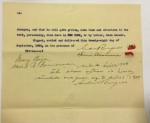
The pistols were actually manufactured by a machinist named C.H. Messinger. It seems than Messinger also made some improvements to the design, as he signed rights to these improvements over to Bannerman:
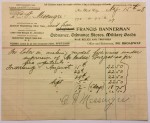

As a side note, isn’t it quaint and refreshing to see contracts that are so free of legalese fine print? But I digress…
It appears that rather than two guns, at least 5 were actually made, each of them clearly done by hand. The earliest artifact of the process is this wooden model made by Burgess:
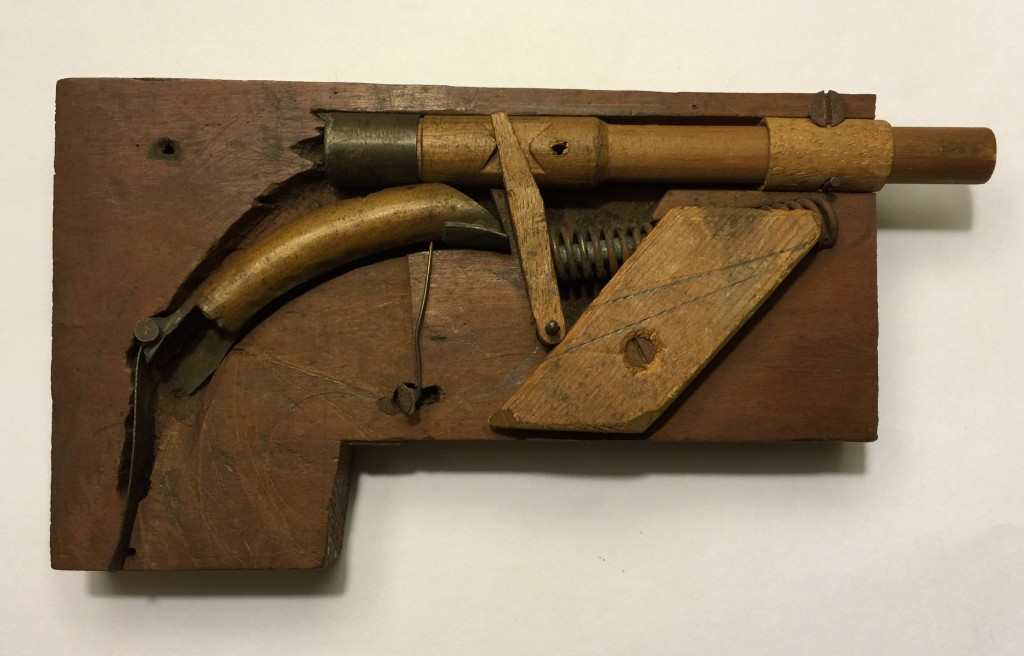
Mechanically, the gun is a blow-forward design, and as you look at the photosets below you can see common elements in each of the pistols based on this mechanism. The muzzle extends past the end of the frame in each one, and the ends of the barrels are textured. These guns would have operated like the contemporary Japanese Hino-Komuro – the barrel is manually pulled forward until it locks in place to cock the action. Pulling the trigger releases the barrel which accelerates rearward under spring pressure, chambers a round as it goes, and then slams it into a fixed firing pin mounted in the rear of the frame. Recoil energy and friction of the fired bullet then throw the barrel forward again. As it moves forward the empty case it held onto the breechface by an extractor and ejected while the barrel locks into its forward position, ready for another shot.
There is a grip safety in the design, which operates in a very straightforward manner: it is directly connected to the firing pin (with the exception of one example which has a transfer linkage between them). If the grip safety it not depressed, the firing pin is recessed in the frame and the gun cannot fire.
Two of the guns, however, use a separate hammer instead of the slam-fire method. This is a detail described in Burgess’ patents #663,956 and #822,851. The patent mentions several other details, such as features to slow the return travel of the barrel to ensure reliable feeding and the possibility of actually tapering the bore to increase friction on the projectile and thus increase the amount of force pulling the barrel forward. I was unable to determine which, if any, of these features were incorporated into the toolroom guns.
The toolroom prototypes include models made for several different calibers and magazines. One is chambered for 7.65mm Parabellum and uses a Luger magazine, one is in .38 ACP and uses a Colt magazine, and one is (probably) in .32 ACP and uses a fixed internal tubular magazine (much like the 1887 Schulhof manual repeater). The two other examples are an all-brass model missing its magazine and what seems to be a very early experiment about which we don’t know much (it’s slide is held on by a piece of string in the photos).
Gun #1: Rough Proof of Concept
Gun #2: Fixed Internal Magazine
Gun #3: Colt Magazine
Gun #4: Luger Magazine
Gun #5: All-Brass Example Missing Magazine

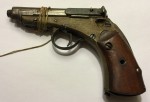
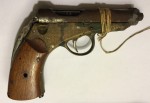







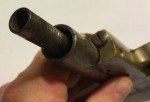








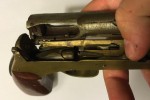
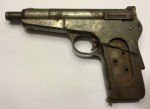

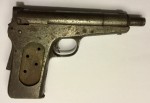


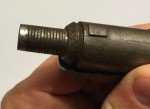









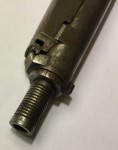

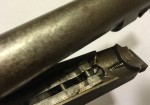

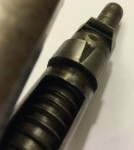



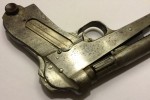
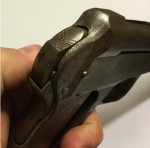
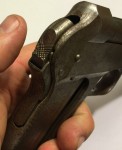



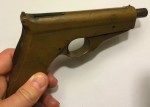

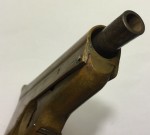

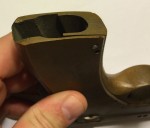




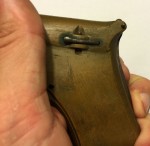
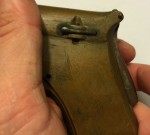



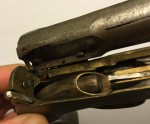
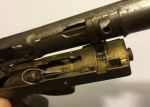
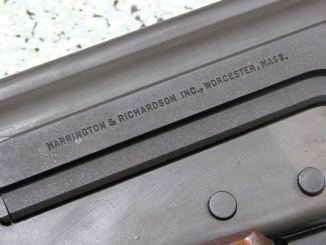
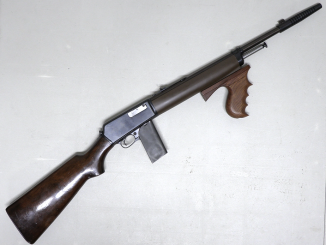
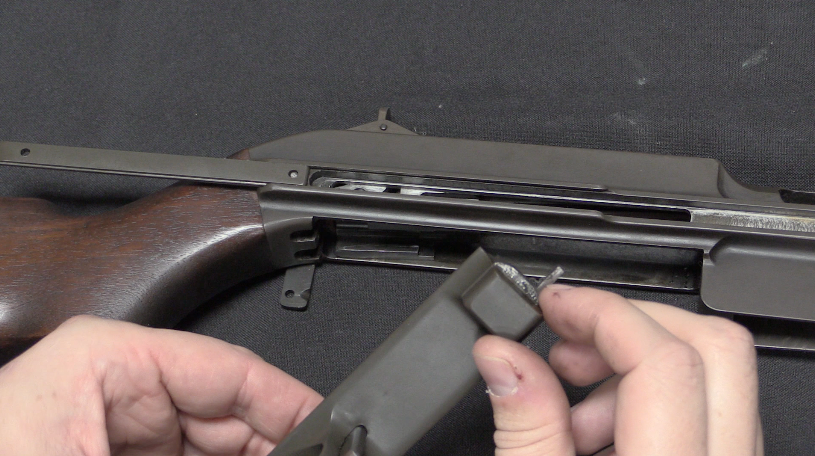
Very interesting! There were also those nutty last-ditch German firearm engineers that tried to develop a “blow-forward” carbine to arm the Nazi party’s Volkssturm militia. I suppose it is a relatively cheap-to-produce system?
Aside from the Schwarzlose pistol reviewed here, and the aforementioned Japanese pistol design, it would seem sort of a developmental “dead end” yes?
There was also the Mannlicher 1894 and the Swiss AK-53 that I am aware of – but yeah, definitely a dead end system.
“the Mannlicher 1894 and the Swiss AK-53”
There is also Hillberg carbine:
https://www.forgottenweapons.com/light-rifle-program/hillberg-carbine/
In the December 1962 issue of Gun World magazine, an article by William B. Edwards titled “Burp Guns of the Modern Armies” includes (bottom p.29) two photos of an SMG designed by Rafael Mendoza, of RM-1/2 LMG and HM-3 SMG fame.
The weapon looks very much like an oversized Hino-Komura pistol with a stamped-metal frame/forend, slab grips like a 1911, a P-35 type trigger, a tubular-steel frame stock like a Canadian-built Sten MK II, and a tubular receiver like a Vz23 family SMG. It feeds through the pistol grip like the Vz23, Uzi, etc., and said pistol grip is so far aft (right at the rear of the receiver without even a P-35’s amount of ‘overhang’),that I’m inclined to suspect that it was a blowforward design as well.
(The usual “slamfire” open-bolt SMG firing cycle would seem to work fairly well like this, which is more than you can say for a semi-auto pistol like the Hino-Komura design.)
The caption reads;
If it wasn’t a blowforward, it had to have the shortest striker/spring setup in history.
I have found no pictures of it on the net. So it may not have gone beyond the prototype stage. The HM-3, of course, is a conventional Vz23/Uzi type SMG.
Does anyone else have more info on this critter?
cheers
eon
Thanks. I’d plumb forgot the Swiss AK-53… Where’d I put my “Small Arms of the World” and so on in the library?
So, with the Burgess design, is it the case on the internal magazine variant that the top part of the action–the barrel, action spring, and exterior receiver–is rolled over to the side, and then cartridges are inserted base down and inserted one at a time? Sort of a “fixed auto-pistol magazine?” Or have I got it mixed up?
Again, thanks for the interesting insights into an inventive mind and the “proto-prototype” process!
Do all these prototypes use the same method to feed cartridges from the magazine? Could you describe their feeding mechanism? Thanks, this is an amazing collection!
I should clarify that I’m mainly curious about the two which use the Colt and Luger magazines since these aren’t covered by the patents posted. Thanks!
I, too, am more than a little curious as to how a blow forward gun feeds from a Colt or Luger magazine.
The feed lips would almost have to be reshaped. And a semicircular cut at the top of the back wall of the magazine box would be necessary for the barrel to “scoop” the top round out of the magazine and push it back and up to meet the firing pin at the fixed breechface.
Either that, or the barrel would need an attachment to pull the round forward as it moved forward in “recoil”, so it could then be picked up and carried back over the top of the magazine to the breechface. A system working rather like the Gabbett-Fairfax Mars feed in reverse, as it were.
Of the two, the recut magazine feed lips and back wall would be a lot simpler, and probably work better.
Just a SWAG, take it for what it’s worth.
cheers
eon
Alas, the blow-forward was a concept that could not reconcile itself with mechanical reality. The concern of a breech-block or slide from a conventional blow-back pistol flying off into the user’s face is ridiculous unless one thinks of a worn out Langehan with a loose retention-screw. Most blow-forward pistols I have seen are either complex or just hard on one’s hand during recoil or perhaps both.
Weapon of choice questionnaire:
Given a choice of guns on a table, which will you pick up for target shooting or for picking off insane cultists in some ghost town?
1. Mannlicher M1894
2. Hino-Komuro pistols
3. Schwarzlose 1908
4. Mauser C77 falling-block pistol
5. Bergmann Mars
6. Winchester 62a
7. Madsen M47
8. Screw this! Get the Panzer IV J and wreck everything!
9. Add your favorite toys to this list!
This questionnaire is a voluntary item. Please do not attempt to kill me with literal flak…
When there’s a group to be dealt with, the Corollary to Keith’s Laws Of Gunfights kicks in;
First law; Have a gun.
Second law; Never bring a knife to a gunfight.
Third law; Never bring a pistol to a rifle fight.
Corollary; Bringing a heavy machine gun to the latter is always an acceptable alternative. Also anti-tank rocket launchers, mortars, artillery, air support, etc.
As such, I’ll take the PzKwIVJ, especially since it has three handy belt-fed 7.9 MGs.
cheers
eon
“insane cultists”
Any other information? Are they immune to or vulnerable too some kinds of ammunition?
“in some ghost town”
Urban environment? So preferable fire-arms are: shotgun, sub-machine gun and assault rifle. For me: Remington Model 11 auto-loading shotgun, don’t know, TKB-408 Korobov bull-pup avtomat https://ru.wikipedia.org/wiki/%D0%A2%D0%9A%D0%91-408
“Add your favorite toys to this list!”
Good placed battery of 105mm howitzers
I guess I should put the insane cultists at the danger level of the Militia United in Righteousness (Yihetuan) from the Boxer Rebellion or some crazy militant version of the Scientologists. I don’t know if they consider themselves bullet proof, but try not to get personal with them. If you have at least ten friends with you and the tank along with two BMW R75 bikes with MG-34 on the sidecars, what next?
Aha! Here it is: W. Darrin Weaver, _Desperate Measures: The Last-Ditch Weapons of the Nazi Volkssturm_ (Ontario: Collector Grade Pubs., pp. 250-253: The “Coenders/ Röchling Volkssturmkarabiner.” Only one in existence–possibly ever made. 5-shot fixed magazine, 7.92x33mm blow forward “semi-automatic, magazine fed, blowback [sic, blowforward!], air-cooled weapon. The nusual features of this carbine are the use of a forward recoiling barrel and a double-action trigger mechanism similar to that used on double-action revolvers.”
I’ll pass on any and all gunfights on offer, thankyouverymuch… Keith’s Laws certainly apply, at least here from my arm-chair.
I might add a Cirilo corollary? Fire first. And from ambush, preferably.
“Coenders/ Röchling”
Would this by any chance be the Dr. “Conders” who worked for Rochling Eisen und Stahlwerke, and designed the “V-3” multi-chambered gun system at Marquise-Mimoyecques?
cheers
eon
I hope that wasn’t “Ack-ack.” 🙁
It was…
Whoops! “My bad…”
Jaroslav Hasek’s, The Good Soldier Svejk, “Svejk’s anabasis” is my idea of avoiding the hostile, fanatic cultists…
Otherwise, then yes, all you lot with all the above described would be OK with me.
There was also a Volksturm rifle in 7.92mm x57 that had the same loading system as the Kurz carbine but is manually operated like a bolt action in reverse.
The main reason that blowforward pistols never succeeded is that as I fired two different types and a friend built his own some years ago is that the pistol has very heavy recoil, This is especially true for the Japanese one,
John
Burgess auto pistol patents;
636196,663955,663956,666084,687448,693105,693106,726399
821921,821922,822851
All seeming very different, all unpractical and all hard to manufacture.
hiw vsk carbine: (Hessische Industriewerke VSK (Volkssturm-Selbstladekarabiner)
http://en.wikipedia.org/wiki/HIW_VSK
http://homepage3.nifty.com/gun45/volkssturmkarabiner1.JPG
http://homepage3.nifty.com/gun45/volkssturmkarabiner2.JPG
http://homepage3.nifty.com/gun45/volkssturmselbstladekarabiner.htm
It’s great to see the wooden model used to work out the mechanics.
I’m developing a flamethrower (for an art project, http://www.matisse.net/flamethrower/) and the actual device will be big and heavy, using a lot of 1/4″ thick steel to surround the plumbing, and so I am woking with cardboard and sometimes wood prototypes to work out exactly where different bits get mounted, what the relationships should be between parts, etc.
Prototyping is something that should be taught more widely, in my opinion, so it is cool to see these examples from over 100 years ago, where you can see the evolution and start to understand how the designer might have been thinking their way through some issues.
I like the model 🙂
Funny- As a guy who has a JD and specialized in business and contract law, those feel very verbose and full of ‘olde timey’ legalese and redundancy. i.e. “party of the second part”, ~”all his heirs and assigns…”
Good legal writing is concise, and clear. We use the plainest words possible to achieve a single unambiguous meaning. It is a sign of incompetence if a writer just shoehorns in a bunch of stuff to cover his bases. “well, I saw an old contract with this language in there, I’m not sure what it does, but I’ll put it in to be safe.” It’s like Ruger throwing 56 1/2 ‘safety’ devices onto their pistol , or a novice “engineer” just building the part extra thick because he is not able to calculate the yield strength.
A good contract should make it clear who does/gives what, and what the other party can do about it if they don’t. For complex things, it should spell out how someone can determine whether they have done/given the work/item to the quality expected. That’s all. Anything more causes confusion. Confusion is expensive.
It takes work to strip language down to the minimum. Lazy writers are verbose.